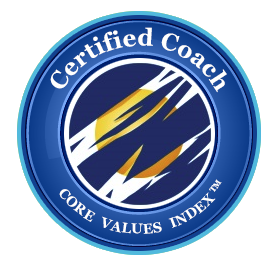
by Dr. JL Knight | Dec 2, 2019 | Communication, Life Coaching, Seven Steps
Have you struggled with communicating with others at times? While it’s great to be an expert at math, science, or social studies, there’s another subject that will do more for your success in life: Communication. Those with great communication skills have an easier time in life!
Communication skills aren’t covered as heavily as other subjects in school, and this is unfortunate. It’s worth the time to enhance this important set of skills, even if you’re already a good communicator.
Keep these techniques in mind when communicating with others:
- Use the right amount of eye contact. There’s a fine line between too much and too little eye contact. If you don’t have enough eye contact, people will either think you’re submissive or disinterested. If you have too much eye contact, you’re viewed as aggressive. Finding the middle point allows you to be seen as likeable.
- A good general rule to follow is to maintain eye contact when either of you is speaking. Break eye contact when there is silence. This simple rule will improve your eye contact immensely. Experiment and see for yourself.
- If maintaining eye contact is uncomfortable for you, study the other person’s eyes. What color are they? How big are their pupils? Imagine you’re an artist and you have to draw the other person’s eyes. You’d look very closely. Surprisingly, this can greatly reduce any anxiety you might be feeling.
- Listen better. If you want to be known as a great conversationalist, become a great listener. There are so few people interested in truly listening to another person that you’ll really stand out! Eye contact is part of being a good listener.
- Wait until the other person is finished before speaking. Avoid interrupting anyone.
- Give your full attention. This is more than just maintaining eye contact. It’s possible to look someone in the eye and think about something else. Keep your attention on the other person.
- Ask open-ended questions. It’s hard to keep a conversation going if you ask questions that can be answered with a simple “yes” or “no”. Ask questions that require a more substantial answer. It’s also a good idea to avoid answering questions with a one-word answer. Explain yourself.
- Be aware of your body language. Your body language can make others view you as open and inviting or closed off. Avoid crossing your arms and legs. Turn and face people while you’re communicating. Smile.
- Know the purpose of the communication. What is the goal? Have a goal for every interaction, even if that goal is just to enjoy yourself. If you’re negotiating a business deal, the goal is to negotiate the best possible deal for your side. Let your goal guide you throughout the conversation.
- Be certain that you understand. It’s easy to misinterpret what someone is attempting to communicate to you. Take the time to ensure that you’ve understood the other person correctly. Ask questions. Ask for clarification if you’re unsure of the other person’s message. Restate what you believe the other person communicated to you.
- Be certain that you’re understood. It’s just as important to ensure that the other person is clear on what you’re communicating. Ask questions and ensure that you’ve been understood. Ensure that you’re being clear in your message.
How well do you communicate with others? Even if you’re a master at communication, you could be even better. Most people don’t communicate nearly as well as they could. Enhancing your communication skills is an easy way to give a significant boost to multiple areas of your life.
You Can Do It!
Copyright © 2019
The Business Transformation Coach, LLC

by Dr. JL Knight | Nov 17, 2019 | Business plans, Productivity, Success, Take Action, Talent, Talent Management
By Jacqueline Knight
Years ago, a successful career usually meant achieving upward mobility. Ambitious employees climbed the corporate ladder to reach management positions. Today, fulfilling career paths run in many different directions, and fewer employees spend their entire careers at one company.
However, some things stay the same. Most workers still value career growth even more than salary and benefits. At the same time, employers depend on a staff that feels engaged in their work and uses learning and development opportunities to enhance their performance.
How can your business cultivate internal talent so that employees contribute maximum value in their individual roles?
Consider these ideas for talent attraction and retention strategies designed for today’s workforce.
Benefits of Developing Internal Talent:
- Save money. Filling positions with internal candidates usually costs less than external hiring. You cut down on expenses like advertising, screening, and training. Plus, new staff members might expect a higher salary than someone who is already on your payroll.
- Reduce turnover. High turnover can damage morale and disrupt productivity. It’s expensive too. Finding and training a replacement typically costs twice the departing employee’s salary, according to The Wall Street Journal. Retain employees longer by showing them they have a future at your company.
- Keep top talent. Retention is even more important when you’re talking about your high performers. Even if they’re not actively searching, they may be getting calls from recruiters, so it’s important to stay competitive.
- Reduce risk. What happens when a new recruit seems unable to deliver what they promised at their initial interview? You’re less likely to make an unfortunate decision when you’re dealing with staff members you know well.
- Achieve your goals. Most importantly, talent development enables you to build the team you need for current and future business priorities. Engaged and empowered employees are essential for success.
Implementing a Talent Development Program:
- Align and communicate. Ensure employees understand your business strategy. Then, you can align individual goals with your corporate priorities, so they know where to focus their efforts.
- Offer e-learning. Provide opportunities to acquire new skills and knowledge. Technology makes education and training more affordable and accessible. Many experts recommend a blended approach of classroom lessons and workplace experiences.
- Coach and mentor. Create a formal mentorship program and reward employees who provide guidance and support to others. Set clear objectives and measure results.
- Embrace diversity. An inclusive workplace can make your business more competitive and innovative. Learn more about your employees’ backgrounds and encourage relationships based on appreciation and respect.
- Recognize potential. In addition to high-performers who regularly exceed expectations, identify those employees who may have the ability to shine, especially if they move into a different role that leverages their strengths. Remember that performance and potential often overlap.
- Encourage collaboration. Major accomplishments in most workplaces are the result of group efforts, so it makes sense to reward teams as well as individuals. Set team goals, use online collaboration tools, and build a sense of shared purpose.
- Pay for performance. At the same time, basing compensation on merit motivates employees to enhance their performance and helps to create a transparent and fair pay structure. Experiment with annual bonuses and other forms of incentive pay.
- Broaden your perspective. Overall, identifying and nurturing internal talent requires expanding your vision. Evaluate employees based on how they can serve your company in the future, as well as how well they’re performing in their current positions. Focus on organization-wide goals.
Give your employees opportunities to develop their skills and progress in their careers. An effective talent development program helps both your staff and your company to meet their goals.
You Can Do It!
Copyright © 2019 The Business Transformation Coach.

by Dr. JL Knight | Nov 9, 2019 | Setting Goals, Take Action, Time Management
by Jacqueline Knight
Do you rush from one task to the next without feeling like you’ve accomplished much by the end of the day? Taking control of how you spend your time could make you more productive and reduce your stress.
You can start by evaluating where you are now and identifying simple changes that will keep you one step ahead. Check each statement that currently applies to you.
Planning and Organizing:
- I clarify my priorities.
- I set challenging and realistic goals.
- I keep a to-do list of tasks and projects.
- I evaluate my progress regularly.
- I take refreshing breaks during work.
- I track my time. I can accurately estimate how long it takes me to do most things.
- I batch similar tasks together, so I can complete them more efficiently.
- I design my workspace for maximum productivity. I keep files and objects I use frequently within reach. I minimize clutter.
Dealing with Distractions:
- I turn off my phone during meals, serious conversations, and similar situations.
- I let my family and coworkers know when I need do-not-disturb time.
- I work on one task at a time.
- I close unnecessary browser tabs.
- I check phone and email messages at designated times.
- I strengthen my powers of concentration through meditation and other exercises.
Overcoming Procrastination:
- I break up projects into small and manageable steps.
- I tell others about my goals to increase my sense of accountability.
- I create interim deadlines and rewards for long-term projects.
- I quit trying to be perfect. I value learning from experience. I can laugh at myself when I do something foolish.
- I motivate myself to get started by imagining how I’ll feel when I complete the tasks that I have been putting off.
Copyright © 2019 The Business Transformation Coach

by Dr. JL Knight | Jul 16, 2019 | Components of Transformation, Decision Making, Discipline, Life Coaching, Mindset
Everyone makes mistakes. When I make a mistake, I own it. I learn from the error and am bettered by it. (I Can Do It)
I accept accountability for my decisions and actions. Being responsible is a way of being and thinking for me. It empowers me, because I feel increased control over events in my life. (I Can Do IT)
I take equal pride in my strengths and shortcomings. I refrain from making excuses. Instead, I develop resolutions. Resolutions are an acknowledgement of the challenges I face, coupled with a solution for overcoming.
For others, it may be easier to be irresponsible. Being accountable is demanding, but I rise to the occasion. I police my own actions because I have a responsibility to myself. I must be able to depend on myself before others can.
When I voice responsibility for my actions, others notice. I am an example for them to follow because I am reliable and trustworthy. They know they can depend on me. Because I am dependable, my decisions and actions affect and influence theirs.
Persistence, honesty, and integrity are fundamental traits I possess. I rely on these traits when I accept accountability for shortcomings.
Today, my ability to accept responsibility has a positive impact on others. I am looked to for guidance. I seek new ways to guide others. It feels great to know others can rely on me to help them overcome obstacles.
Self-Reflection Questions:
- Whom do I look to for guidance?
- How has being accountable had a positive impact in my life?
- Have I seen examples of the adverse effects of being irresponsible?
By Dr. Jacqueline L. Knight
The Business Transformation Coach, LLC
Copyright © 2019

by Dr. JL Knight | Jul 9, 2019 | Decision Making, Discipline, Setting Goals, Staying Disciplined, Take Action
Written by: Dr. Jacqueline L. Knight
The Business Transformation Coach, LLC
Copyright © 2019
Time management is an essential skill, and hour blocking is an easy and powerful way to master this skill. You can use it to block off hours in your schedule and get more things finished. It enables you to take control of the minutes in each day.
Follow this process to take advantage of this valuable technique:
- Start with planning. Make a list of all of your important tasks for the week. Then, narrow this list down to three to five essential tasks.
- Be realistic about your planning. Avoid thinking that you can do a million tasks in one day or week.
- Block your hours. After you have a short list of tasks, block the hours on your schedule. This is called time blocking and essentially requires you to take each hour and assign a task or item to it.
- Clump related tasks together and add them to specific blocks of time.
- Remember to schedule lunches and breaks. Taking time to rest your mind and body is important! Your breaks allow you to get back to your tasks with renewed energy.
- Reduce distractions. Hour blocking demands that you eliminate distractions, so you don’t lose focus.
- Figure out what your main distractions are. Do you waste time on social media or constantly check your phone? Do you spend hours in your email inbox and respond to every message instantly?
- Eliminate or reduce these distractions. You may want to set aside a specific chunk of time each day to handle your social media, email inbox, and other tasks that distract you from your more essential actions.
- Also, when you’re working, let others know that you’re busy so they can limit their interruptions.
- Keep the time blocks flexible. Unless you know the exact amount of time each task will take, it’s important to keep the time blocks flexible. This will also enable you to take care of other important things that come up with a minimum amount of stress or changes to your schedule.
- Review your time blocks regularly. Make adjustments as needed. If your tasks change, or you find that they take more or less time than you thought, modify your time blocks to take the new information into account.
- Reviewing your time blocks will also give you the chance to see when you’re most productive. If you do your best work in the morning, schedule more important tasks during these hours. Reviews will help you evaluate your productivity levels and decide which parts need attention.
- Another advantage of doing reviews is that it gives you the chance to see if your reminders are working or if they need to be changed. Use alerts on your phone or computer, sticky notes, or traditional alarms to remind you that it’s time to move to the next task. The key is to find something that works for you.
Effective time management can help you finish more tasks each day and feel more accomplished. Hour blocking is a useful method for anyone who is interested in greater productivity, either at home or at work.
You Can Do It!









